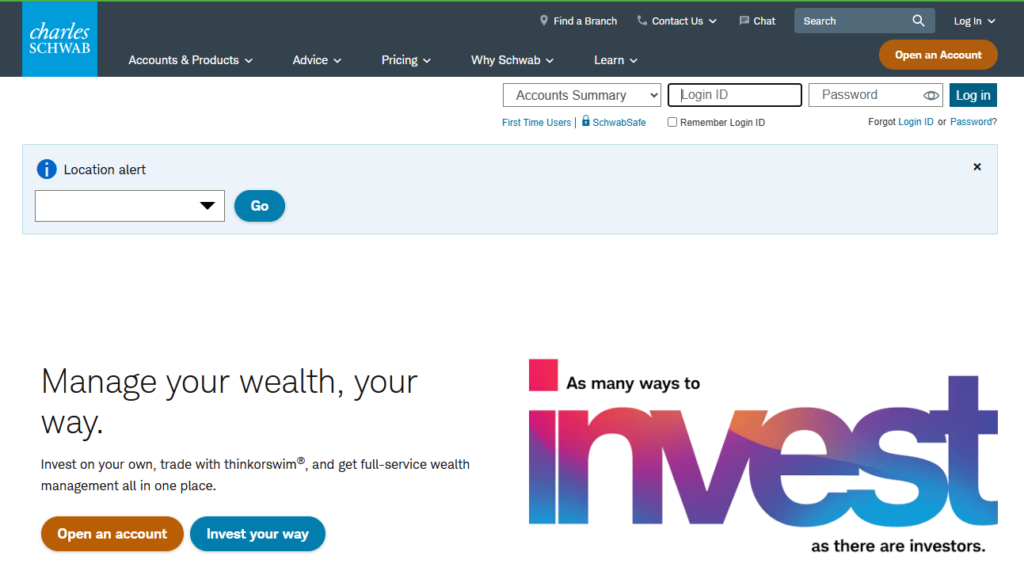For More Free Videos, Subscribe to the Rhodes Brothers YouTube Channel.
“You don’t need to have piles and piles of money… you can start with $5, $10, $50, $100. It doesn’t need to be a whole lot of money.”— John S. Rhodes, Rhodes Brothers
Starting your investing journey can feel intimidating—especially when you’re staring at a bank account that doesn’t exactly scream “Wall Street tycoon.” But here’s the truth: you don’t need thousands of dollars to start investing. In fact, with the right strategies and mindset, you can build real wealth with just a few bucks a week.
This post will walk you through the exact steps you need to take to begin investing with a small amount of money. Whether you’re a student, a young professional, or someone just getting back on your financial feet, the techniques here are approachable, practical, and powerful.
We’ll explore:
- How to pick low-cost investment platforms
- How fractional shares and ETFs make investing accessible to everyone
- Why consistency is your biggest superpower
- Real tools you can use to automate your growth
- Mistakes to avoid as a beginner
- Action steps for different life stages
Before we go further, chew on this: If you invest just $25 a week and get an average return of 8%, you could have over $75,000 in 20 years. That’s the power of consistency and compounding—and it’s available to you, starting today.
TL;DR
- Start small: You can invest with as little as $5 using apps like Robinhood, Acorns, or Fidelity.
- Avoid high fees: Choose platforms with zero or low trading fees.
- Use fractional shares and ETFs: Get exposure to big-name companies and diversified funds without needing big bucks.
- Stay consistent: Automate your investments with dollar-cost averaging.
- Don’t skip the basics: Build an emergency fund and pay off high-interest debt before diving deep into investing.
- Think long-term: Let compounding work its magic over years—not weeks.
Step-by-Step Guide to Start Investing with a Small Amount of Money
Getting started with investing doesn’t require a huge bankroll, but it does require making smart decisions from the beginning. The good news? Today’s tools and platforms make it easier than ever to dip your toes into the investing world—even with just a few dollars. Let’s break down the first and most important step.
1. Start with the Right Platform
When money is tight, fees are your enemy. That’s why choosing a low-cost investing platform is your first smart move.
Here are three great beginner-friendly platforms:

- Robinhood – No commission fees, user-friendly, easy way to buy stocks and crypto.
- Fidelity – Offers fractional shares and no account minimums.
- Acorns – Rounds up your spare change and invests it automatically.
Tip: Look for platforms that offer fractional investing, no minimum balances, and commission-free trades.
2. Begin with Fractional Shares
Ever looked at a stock and thought, “$300 for one share? No way!” That’s where fractional shares come in.
If a share of Tesla costs $200, you can buy 0.1 shares for $20. That means almost anyone can own pieces of big companies.
Where to buy fractional shares:

You can also invest in Exchange-Traded Funds (ETFs) with fractional shares to diversify your portfolio without needing thousands of dollars.
“The key is to get started, get some traction, and then snowball from there.” — John S. Rhodes, Rhodes Brothers
3. Automate Your Contributions
Consistency beats perfection every time. The best investors aren’t trying to time the market—they’re investing regularly, no matter what.
This is called Dollar-Cost Averaging (DCA). It means you invest the same amount of money at regular intervals—like $50 every payday—no matter what the market is doing.
Set it and forget it:

- Acorns lets you round up purchases and invest them.
- Fidelity and Vanguard offer recurring investment options.
- Your bank might allow auto-transfers to your investing account.
4. Build the Foundation First
Before diving head-first into investing, make sure you’ve got your financial basics covered:
- Emergency Fund: Aim for 3–6 months of expenses saved.
- High-Interest Debt: Pay off credit cards before investing.
- Budget: Know what you can safely invest each month.
“Do not save what is left after spending, but spend what is left after saving.” — Warren Buffett
Actionable Steps for Different Life Stages
Investing isn’t a one-size-fits-all journey—it looks different depending on where you are in life. Whether you’re just learning how money works or preparing for retirement, there are specific strategies that can help you build wealth with consistency, confidence, and clarity. Here’s how to tailor your approach based on your stage in life.
For Beginners & Students
You may be juggling classes, part-time jobs, or early career opportunities—but this is the perfect time to start investing. Why? Because time is your biggest asset. The earlier you start, the more powerful compound interest becomes.
Recommended Actions:
- Start with Acorns or similar apps
Apps like Acorns automate investing by rounding up your everyday purchases and investing the spare change. It’s passive and painless—ideal for tight budgets. - Invest in broad-market ETFs like VTI, VOO, or SPY
These ETFs offer instant diversification and track the overall performance of large segments of the stock market. They’re low-cost, stable, and perfect for long-term growth. - Commit to a weekly habit
Even $5 a week matters. If you invest $10 weekly with an 8% return over 30 years, you’ll end up with more than $50,000. The key is consistency, not the amount. - Use educational tools
Free platforms like Investopedia or YouTube channels like the Rhodes Brothers are gold mines for financial literacy. The more you learn early, the more confident you’ll be with your money decisions.
Bonus Tip:
Consider opening a custodial Roth IRA if you’re under 18 and have earned income. It’s a huge head start on retirement savings.
For Young Professionals
You’ve got your first real job, maybe a side hustle, and (hopefully) a bit more financial wiggle room. This is the time to lay strong financial foundations while building toward major goals like home ownership, travel, or early retirement.
Recommended Actions:
- Open a Roth IRA (if eligible)
Roth IRAs allow your money to grow tax-free, and you can withdraw contributions (not earnings) at any time—making them flexible and powerful. In 2025, you can contribute up to $6,500 if you’re under 50. - Set up auto-investments
Automate $50–$100 monthly into index ETFs or fractional shares of growth stocks. Use platforms like Fidelity, M1 Finance, or SoFi to streamline this. - Use budgeting and tracking tools
Apps like YNAB (You Need a Budget) or Personal Capital help you plan expenses, monitor savings, and track investments. Knowing where your money goes makes it easier to redirect more of it toward wealth building. - Balance investing with debt repayment
Focus on paying off high-interest debt (like credit cards) while investing consistently. If your employer offers a 401(k) match, prioritize contributing enough to get the full match—it’s free money.
Bonus Tip:
Start a High-Yield Savings Account (HYSA) for short-term goals so you don’t have to sell investments during market dips.
For Those Nearing Retirement
If you’re in your 50s or early 60s, the focus shifts from accumulation to income stability and risk management. You’re not just growing your money—you’re preparing to use it.
Recommended Actions:
- Shift toward income-generating assets
Look at dividend-paying stocks, bond ETFs, or REITs (Real Estate Investment Trusts) for regular income. Funds like Vanguard Dividend Appreciation ETF (VIG) or iShares iBoxx $ Investment Grade Corporate Bond ETF (LQD) can be useful. - Use reliable platforms like Fidelity or Vanguard
Both offer robust retirement resources, target-date funds, and personalized support. - Consider a target-date fund
These funds automatically adjust your asset allocation as you approach retirement. They reduce risk and simplify the process—ideal if you prefer a hands-off approach. - Maximize retirement contributions
At this stage, you’re eligible for catch-up contributions. For example, in a 401(k), you can contribute an extra $7,500 annually (on top of the standard $23,000 limit in 2025). - Reassess your risk tolerance and time horizon
Meet with a fiduciary financial advisor or use online tools to ensure your investment mix matches your goals and withdrawal plans.
Bonus Tip:
Use tools like NewRetirement, Empower, or T. Rowe Price’s Retirement Income Calculator to model different retirement scenarios and income strategies.
Common Mistakes to Avoid When Starting with a Small Investment
Even though starting small is a smart and doable strategy, there are several common missteps that can derail your investing journey before it even gets going. These mistakes are especially risky when you’re working with limited funds because there’s less room for error. But the good news? They’re completely avoidable once you know what to watch for.
Here’s a deeper look at the most common mistakes new investors make—and how to avoid them.
1. Waiting for the “Right Time”
Far too many would-be investors sit on the sidelines, waiting for the stars to align: the perfect income level, the perfect stock price, the perfect economy. But here’s the deal—there’s no such thing as the perfect time.
The market moves up and down, and trying to time your entry perfectly is a fool’s game. While you’re waiting, you’re missing out on compound growth, which is the single most powerful force in wealth building.
Smart Move:
Start now—even if it’s just $5. The amount isn’t as important as building the habit and putting time on your side.
2. Chasing “Hot” Stocks or Trends
Everyone loves a good success story—like the person who turned $1,000 into $100,000 with crypto or meme stocks. But these stories are the exception, not the rule. Jumping on hype without research often leads to losses, not gains.
Buying into volatile trends like meme stocks or altcoins can feel exciting, but they usually come with extreme risk, especially for beginners who don’t have the experience or diverse portfolio to weather losses.
Smart Move:
Avoid the noise and stick with simple, proven investments like index ETFs (e.g., VTI or SPY) until you’ve built knowledge and confidence. Focus on long-term value, not short-term hype.
3. Not Understanding What You’re Investing In
If you don’t understand where your money is going, you’re gambling—not investing.
This is one of the most common and dangerous mistakes new investors make. Buying a stock because it’s trending, or because a friend told you to, is a recipe for regret. You don’t need to be an expert, but you should know the basics of what the company or fund does, how it earns money, and how it fits into your goals.
As Warren Buffett puts it: “Never invest in a business you cannot understand.”
Smart Move:
Start with broad ETFs that track the whole market. Read about the companies or funds you’re buying into. Use tools like Morningstar, Yahoo Finance, or Investopedia for quick, beginner-friendly breakdowns.
4. Ignoring Fees and Costs
When you’re only investing small amounts, every dollar counts. That’s why even seemingly small fees—like a 1% management fee—can eat away at your returns in a big way.
Here’s some perspective:
If you invest $5,000 and pay a 1% annual fee over 30 years, you’ll lose nearly $28,000 in potential returns. That’s a massive cost for something you can often avoid.
Smart Move:
Use platforms with zero-commission trading and no account minimums, like Fidelity, Robinhood, or SoFi. When choosing ETFs or mutual funds, look for those with low expense ratios—ideally under 0.20%.
5. Pulling Out Too Soon
This is one of the most emotionally driven mistakes. The market dips, and fear takes over. You pull your money out—and lock in losses. But here’s the thing: volatility is normal. The market will go up and down. That’s part of the game.
New investors often treat investing like saving: they expect steady, consistent growth or quick returns. But unlike a savings account, investing is designed for long-term wealth building, not short-term access.
Smart Move:
Only invest money you won’t need for at least 3–5 years. Have an emergency fund in place so you’re not tempted to pull out your long-term investments during a downturn.
Frequently Asked Questions
How much money do I need to start investing?
You can start with as little as $1 using apps like Robinhood or Acorns.
What’s a good investment for beginners?
Low-cost ETFs like VTI or SPY are great starting points due to their diversification.
What is a fractional share?
It’s a small piece of a stock. Instead of buying one whole $300 share, you can buy 0.1 share for $30.
Is it better to invest or save?
Do both. Save for emergencies, invest for long-term growth.
What’s dollar-cost averaging?
Investing a fixed amount regularly, regardless of market conditions.
Should I pay off debt before investing?
Yes—especially high-interest debt like credit cards.
How do I avoid fees when investing?
Use platforms like Fidelity, Robinhood, or SoFi, which offer no-commission trades.
Can I invest if I live paycheck to paycheck?
Yes! Start small—$5 at a time. Use round-up apps or automate tiny transfers.
What if the market crashes?
Don’t panic. Stay invested. Historically, markets recover and grow in the long run.
Is investing risky?
Yes, but not investing is riskier. Diversify and invest long-term to manage risk.
Your Path to Wealth Starts Small
Starting with a small amount of money doesn’t mean small results. With the right tools, mindset, and consistency, your small steps can lead to massive outcomes over time.
Here’s your action plan:
- ✅ Choose a low-fee platform like Robinhood or Fidelity.
- ✅ Start with ETFs or fractional shares.
- ✅ Set up automatic weekly investments.
- ✅ Stay in the game for the long term.
Ready to put your money to work? Start by investing just $10 today. It’s not the amount—it’s the action that matters.
Thanks for hanging out with us! Want to learn more, stay sharp, and grow your wealth the smart way?
Subscribe to the Rhodes Brothers YouTube Channel for more straight-talk strategies, tools, and real-life money wisdom.
Resource List
Books
- The Little Book of Common Sense Investing by John C. Bogle
- I Will Teach You to Be Rich by Ramit Sethi
- Your Money or Your Life by Vicki Robin
Podcasts
Tools & Apps
- Acorns: Round-up investing for beginners
- Robinhood: Zero commission trading
- Fidelity: Great for ETFs and IRAs
- SoFi Invest: Good for beginners and fractional shares
- Personal Capital: Track net worth and investments
- YNAB (You Need a Budget): Budgeting tool that helps free up money to invest



